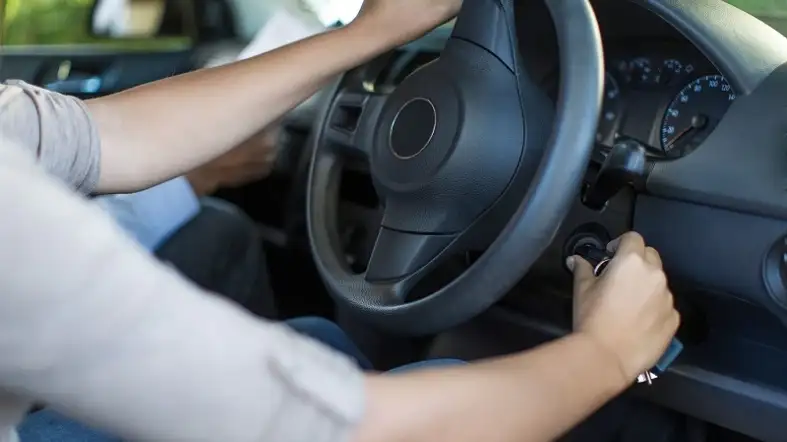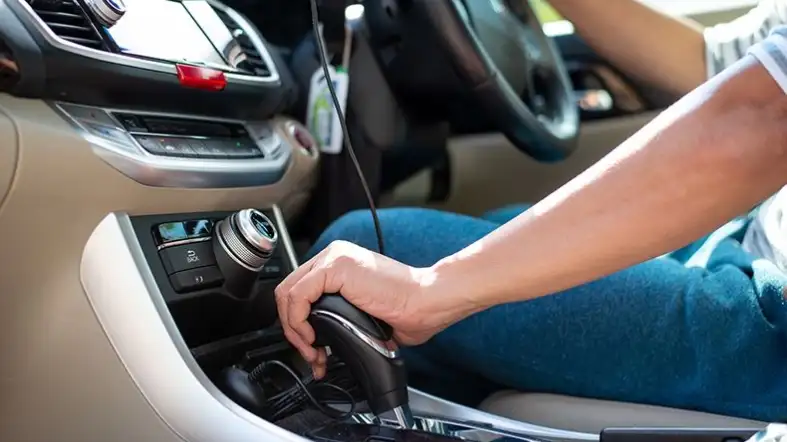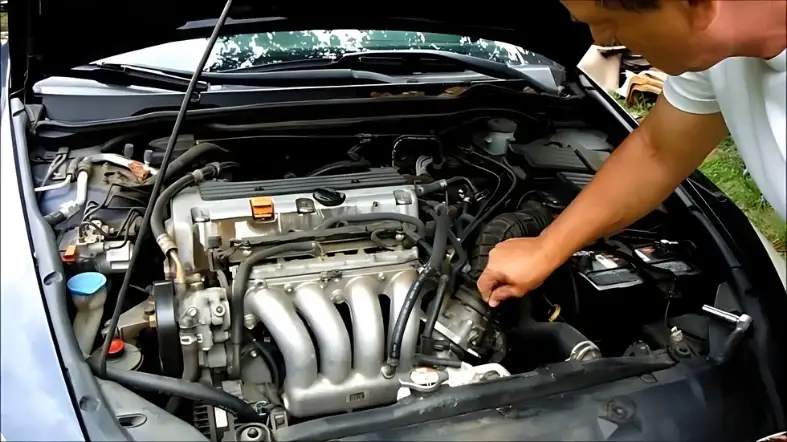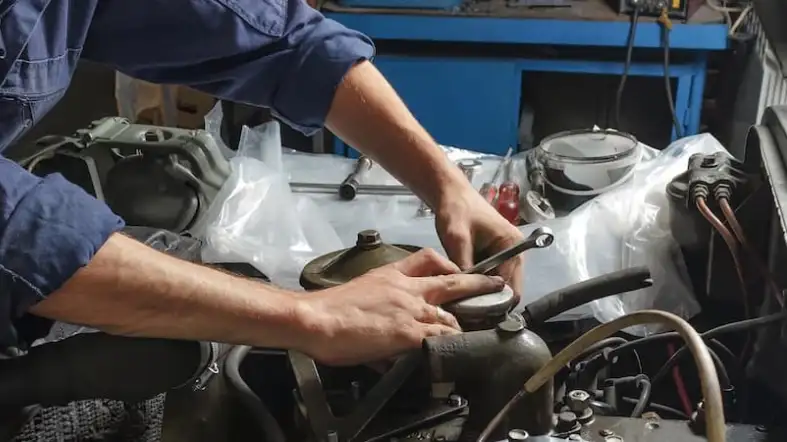Are you one of those people who’s been ignoring that grinding noise when you start your car?
You’re hoping it will just go away on its own or you’re hesitant to take your car to a mechanic because of the potential cost.
Whatever your reason may be, driving with a bad starter is a risky move.
But just how long can you push your luck before it ultimately gives out? In this blog, we will discuss how long you can drive with a bad starter.
From the symptoms of a failing starter to the potential consequences of ignoring it, we’ll cover it all.
How long can you drive with a bad starter?
If you have a bad starter in your car, it’s possible that you may be able to start it a few more times by repeatedly trying to turn the key or using a jump starter, but it’s not a good idea to rely on it for too long.

Eventually, the starter will completely fail and your car won’t start at all, leaving you stranded.
Driving with a bad starter can also be risky because if your car stalls while you’re on the road, you may lose power steering and power brakes, making it difficult to maneuver and potentially causing an accident.
Factors that can affect how long you can drive with a bad starter
When your car has a bad starter, it can be a frustrating experience.
This essential component is responsible for getting the engine going, and without it, you might be unable to start the car at all.
However, there are some situations where you can still drive your car, even with a bad starter.
Here are some factors that can affect how long you can drive with a bad starter:
1. The severity of the problem:
The extent of the damage to your starter can greatly affect how long you can continue driving your car.
If the starter is only slightly damaged, you might be able to start the car by using a push start or jump-starting it with another vehicle.
However, if the starter is completely broken, you won’t be able to start the car at all.
2. The age of the car:
If your car is relatively new, you might be able to drive it for a short distance with a bad starter.
However, older cars tend to have more wear and tear on their components, which can make it more difficult to drive with a bad starter.
3. The condition of the battery:
The battery is another component that can affect how long you can drive with a bad starter.
If the battery is weak, you might not be able to start the car even if the starter is in good condition.
In this case, you might need to replace the battery before you can continue driving.
4. The driving conditions:
If you’re driving in stop-and-go traffic or in hilly terrain, you might find it more difficult to drive with a bad starter.
This is because you’ll need to stop and start the car more frequently, which can put additional strain on the starter.
5. The distance you need to travel:
If you only need to drive a short distance, you might be able to make it to your destination with a bad start.
However, if you’re planning a long road trip, you’ll likely need to get the starter fixed before you leave.
What are the risks of driving with a bad starter?

If the starter is not functioning correctly, it can cause a range of issues that can negatively impact your driving experience.
Here are some of the risks of driving with a bad starter:
1. Difficulty starting the engine:
A bad starter can cause your car to have difficulty starting, making it hard to get going on the road.
This can be especially problematic if you need to start your car in a hurry, like in an emergency situation.
2. Stalling while driving:
A faulty starter can also cause your engine to stall while you’re driving, which can be very dangerous.
This could lead to a loss of control of the vehicle and potentially cause an accident.
3. Battery damage:
A bad starter can also put a strain on your car’s battery, causing it to drain faster than usual.
This can be problematic if you’re in an area where it’s difficult to get a jumpstart or a new battery.
4. Damage to the engine:
In some cases, a bad starter can cause damage to the engine itself.
This can occur if the starter is left to grind against the flywheel for an extended period of time, causing damage to the teeth on the flywheel or the starter itself.
5. Costly repairs:
Driving with a bad starter can lead to more costly repairs in the long run.
If the starter is left unfixed, it can cause damage to other components of the engine, leading to more expensive repairs down the line.
Temporary Fixes for a Bad Starter

A bad starter can cause a lot of problems with your vehicle, including not being able to start the engine at all. Here are some temporary fixes that you can try:
1. Tap the starter:
Sometimes, a bad starter can be due to worn-out contacts or brushes.
You can try tapping the starter motor gently with a hammer or a metal rod to try and dislodge the contacts.
This may help get your car started, but it’s not a long-term solution.
2. Jump-start the car:
If your car won’t start because of a bad starter, you can try jump-starting it using jumper cables and another vehicle.
This can provide the necessary power to turn the engine over and get it started.
However, if the starter is completely dead, jump-starting may not work.
3. Push-start the car:
If you have a manual transmission, you can try push-starting your car.
This involves pushing the car to get it rolling and then engaging the clutch while in gear to start the engine.
This method is not recommended for automatic transmission vehicles.
4. Hit the starter with a blunt object:
This is a last resort and should only be done if you’re in a situation where you have no other options.
You can try hitting the starter with a blunt object, such as a wrench or a hammer, to try and get it to engage.
This is not a safe method and can cause damage to the starter.
When to Replace a Bad Starter?

Here are some signs that your starter may need to be replaced:
1. Clicking sound:
If you turn the key and hear a clicking sound but the engine doesn’t turn over, this is a common sign of a bad starter.
2. Grinding noise:
A grinding noise when you try to start the engine could indicate that the starter gear is worn out and needs to be replaced.
3. No noise at all:
If you turn the key and hear nothing at all, this could indicate that the starter has failed completely.
4. Slow cranking:
If the engine cranks slowly or takes longer than usual to start, this could indicate that the starter is failing.
5. Warning light:
Some vehicles have a warning light on the dashboard that will illuminate if there’s a problem with the starter or charging system.
If you experience any of these symptoms, it’s important to have your vehicle inspected by a professional mechanic.
They can diagnose the issue and let you know if the starter needs to be replaced.
FAQs
What Are The Signs Of A Bad Starter?
Some common signs of a bad starter include a clicking noise when you turn the key, a grinding sound when you start the car, or the engine failing to start altogether.
You may also notice that the dashboard lights flicker or dim when you try to start the car.
What Should I Do If My Starter Fails While I’m Driving?
If your starter fails while you’re driving, you should try to pull over to the side of the road as quickly and safely as possible.
If you can’t pull over safely, turn on your hazard lights to let other drivers know you’re having trouble.
Call for roadside assistance or a tow truck to have your car taken to a mechanic.
How Much Does It Cost To Replace A Starter?
The cost of replacing a starter can vary depending on the make and model of your car, as well as the location of the repair shop.
In general, you can expect to pay anywhere from $200 to $500 for a starter replacement.
Conclusion
Driving with a bad starter is not recommended and can cause further damage to your vehicle.
While you may be able to get away with it for a short period of time, it’s important to address the issue as soon as possible.
Ignoring a faulty starter can lead to a host of other problems, including damage to your engine and electrical system, as well as the risk of getting stranded on the road.
So, if you suspect that your starter is not functioning properly, it’s best to get it checked out by a mechanic and have it fixed before it becomes a more serious problem.
